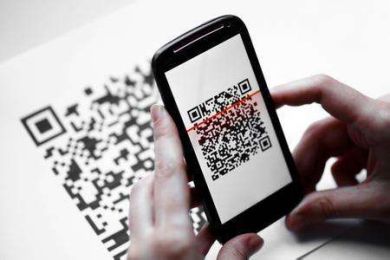US media: China took the lead into the cashless social mobile phone when the wallet surprised Americans
The U.S. media said it is estimated that in 2016 the scale of mobile payments in the United States will be 112 billion U.S. dollars, compared with 9 trillion U.S. dollars in China (about 58 trillion yuan). Mobile payment has become a means by which many Chinese people pay for various goods and services, and some of the incremental effects of mobile payment are emerging.

The Wall Street Journal's website in the United States reported on January 5 that in Beijing, a paper card in front of a beggar says "Recommend the use of WeChat payment." This is a portrayal of the current trend..jpg)
Reported that through the mobile phone services such as WeChat payment popular all over China. After earning its initial position of online shopping payment, mobile payment entered the field of physical payment and quickly became a means by which many Chinese people paid for everything. This includes paying small personal debts.
Reported that mobile payment in China's daily business activities play an increasingly important role. Just as technology companies are driving innovations in the retail, automotive and media industries, the success of Chinese internet companies can give insight into the future of technology companies driving financial innovation.
According to an estimate from Forrester Research, the U.S. mobile payment scale in 2016 was 112 billion U.S. dollars. According to iResearch, a Chinese company, the scale of China's mobile payments in 2016 reached 9 trillion U.S. dollars.
Reported that for Chinese Internet companies, they rewarded more than just the transaction fee they earned from the merchant, which is typically 0.6% of the transaction amount. The company also collects consumer data that can be leveraged to turn their applications into marketing platforms that provide extended services from sharing a bike to traveling.
Reported that some of the incremental impact of mobile payment is emerging. These payments have not yet been incorporated into the PBoC clearing system, making it increasingly difficult for China's currency-related authorities to track the flow of capital flows and monitor money laundering and fraud. The People's Bank of China has ordered a new payment and settlement platform to require non-bank financial institutions to bring online payment services to the platform by the summer of 2018.
Consumers also receive more referrals on loans, investments and other financial products through their smartphones. According to the data from the People's Bank of China, short-term consumer credit in China increased 160% YoY in the first eight months of 2017. Some analysts believe that in part because of the increase in borrowing convenience.
In the meantime, Chinese are also reducing the use of traditional cash, such as coins and banknotes. According to a report by the People's Bank of China, the traditional cash consumption of Chinese consumers in 2016 was about 66 trillion yuan (about 10 trillion U.S. dollars), a figure that dropped by about 10% in two years.
Alibaba opened the way for mobile payments. Through the company's online store opened, businesses sell goods to consumers. More than a dozen years ago, Alibaba followed the example of a U.S. company, PayPal Holdings (PYPL), to launch a commissioned payment service called Alipay. The system can host payment before the buyer receives the purchased product. This service quickly became popular. After that, Alipay gradually developed into a network and mobile payment service provider and overtook PayPal as the world's largest mobile payment platform in 2013.
In the same year, Tencent linked a mobile payment system with its popular WeChat instant messaging application. According to iResearch data, the share of WeChat payment in China's mobile payment market is 40% and Alipay 54%.
Reported that the use of these two applications are similar. People associate their bank account with the app, and later at shopping time they can pay by scanning the merchant's QR code or having the merchant scan their QR code. People can also transfer money by clicking on an icon on WeChat or Alipay..jpg)
Recently, Manni Cheng, a textiles salesman from Shanghai, bought roasted prawns in cash at a recent night market in Taiwan, but then she noticed that the vendor accepted Alipay payment. So she wants cash back, paid with a cell phone.
Cheng said she likes Alipay because she can track her spending and does not have to carry large amounts of cash with her. Her balance in Alipay was transferred to the money market fund within the app.
Cheng said Alipay is a payment tool with financial management capabilities.
Reported that the use of mobile phones directly to the wallet when used to always make foreigners to China surprised. Diego Merino, an admissions officer from New York City, recently stayed in Beijing. One day he wanted to buy dumplings for lunch. When he asked a friend for cash, the other came over and left the phone after paying him the money. . He said the process is about three seconds.
Wechat and Alipay are getting more and more attention in the area after the hotel and resorts in US tourist attractions have been cooperated. Recently, a group of Chinese tourists ate buffets at the Bacchanal Buffet at the Caesars Palace in Las Vegas and enjoyed various delicacies such as Australian T-bone lamb chops, frozen king crab legs and handmade desserts. After dining, they took out their smartphones Bills.
.jpg)
Bruce Bommarito, a Caesar's Palace executive, said a couple stopped by to see if they were checking out with WeChat and asked for more. The couple was very surprised to see if Americans could checkout this way. Americans can now sign up for WeChat account, but can not associate with a U.S. bank card. Alipay did not open to the Americans temporarily.